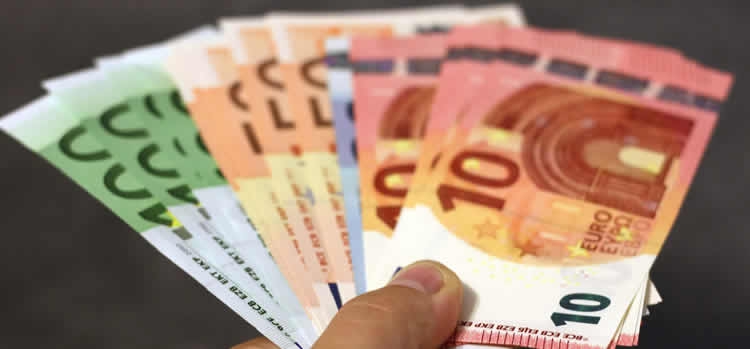No cash, no shopping: Europeans love money in hand

Digital currencies may be getting all the buzz these days, but notes and coins still reign supreme in most of Europe. Cash made up around 79 percent of everyday payments across the euro area last year, according to a European Central Bank study. Almost a quarter of consumers also kept some cash at home as a precaution, and 20 percent said they had a high-denomination note – €200 ($237) or €500 – in their possession in the year before the survey was conducted.
The European Central Bank (ECB) has conducted a comprehensive study to analyse the use of cash, cards and other payment instruments used at points of sale (POS) by euro area consumers in 2016.
The survey results show that in 2016 cash was the dominant payment instrument at POS. In terms of number, 79% of all transactions were carried out using cash, amount ing to 54 % of the tot al value of all payments. Cards were the second most frequently used pay ment instrument at POS ; 19% of all transactions were settled using a payment card. In terms of value, this amount s to 39% of the total value paid at POS.
The use of cash and cards differs according to country, place of purchase, transaction value and consumers’ demographic characteristics. In terms of number of transactions , cash was most used in the southern euro area countries, as well as in Germany, Austria and Slovenia, where 80% or more of POS transactions were conducted with cash. Cash was least used in the Netherlands, Estonia and Finland, where its share in the number of transactions ranged between 45% and 54%. In terms of value, the share of cash was highest in Greece, Cyprus and Malta (above 70%) , while it was lowest in the Benelux countries, Estonia, France and Finland (at , or below , 33%) . When looking at the demographic characteristics of euro area consumers, it can be concluded that men tend to use cash more often than women. Furthermore, consumers aged 40 and over use more cash than younger age groups , whereas cash us age appears to be relatively homogeneous across different levels of education.
Overall, the results put the use of cash relative to non- cash payment methods by consumers at POS into perspective, and indicate that the use of cash at POS is still widespread in most euro area countries. This seems to challenge the perception that cash is rapidly being replace d by cashless means of payment.
The study also found that many people don’t actually know their own payment habits. When asked how they prefer to pay, a larger share of respondents said card, not cash. That may be because nearly two-thirds of all transactions are below 15 euros, the report said. Purchases of coffee and lottery tickets don’t stick in the mind as much as, say, a new pair of shoes.
People mostly seem to remember the larger-value payments which they make less regularly, and tend to forget how frequently they make low-value payments on a daily basis.
Access to payment cards does not seem to fully explain differences in payment behaviour, because on average access is high in all euro area countries. However, there seems to be a relationship between card acceptance (i.e. the perceived availability of card payment terminals) and cash usage. It can therefore be expected that in countries and market sectors where card acceptance is still low, cash usage may decrease once infrastructure for making card payments becomes more widely available.
Although the share of contactless payments in many countries is still low, the survey results suggest that the speed with which such payments have been embraced in some countries may mean that once payment cards and POS terminals are enabled with contactless technology on a wider scale, the share of contactless payments could increase significantly.
The study confirms that cash is not only used as a means of payment, but also as a store of value, with almost a quarter of consumers keeping some cash at home as a precautionary reserve. It also shows that more people than often thought use high denomination banknotes; almost 20% of respondents reported having a €200 or €500 banknote in their possession in the year before the survey was carried out.

